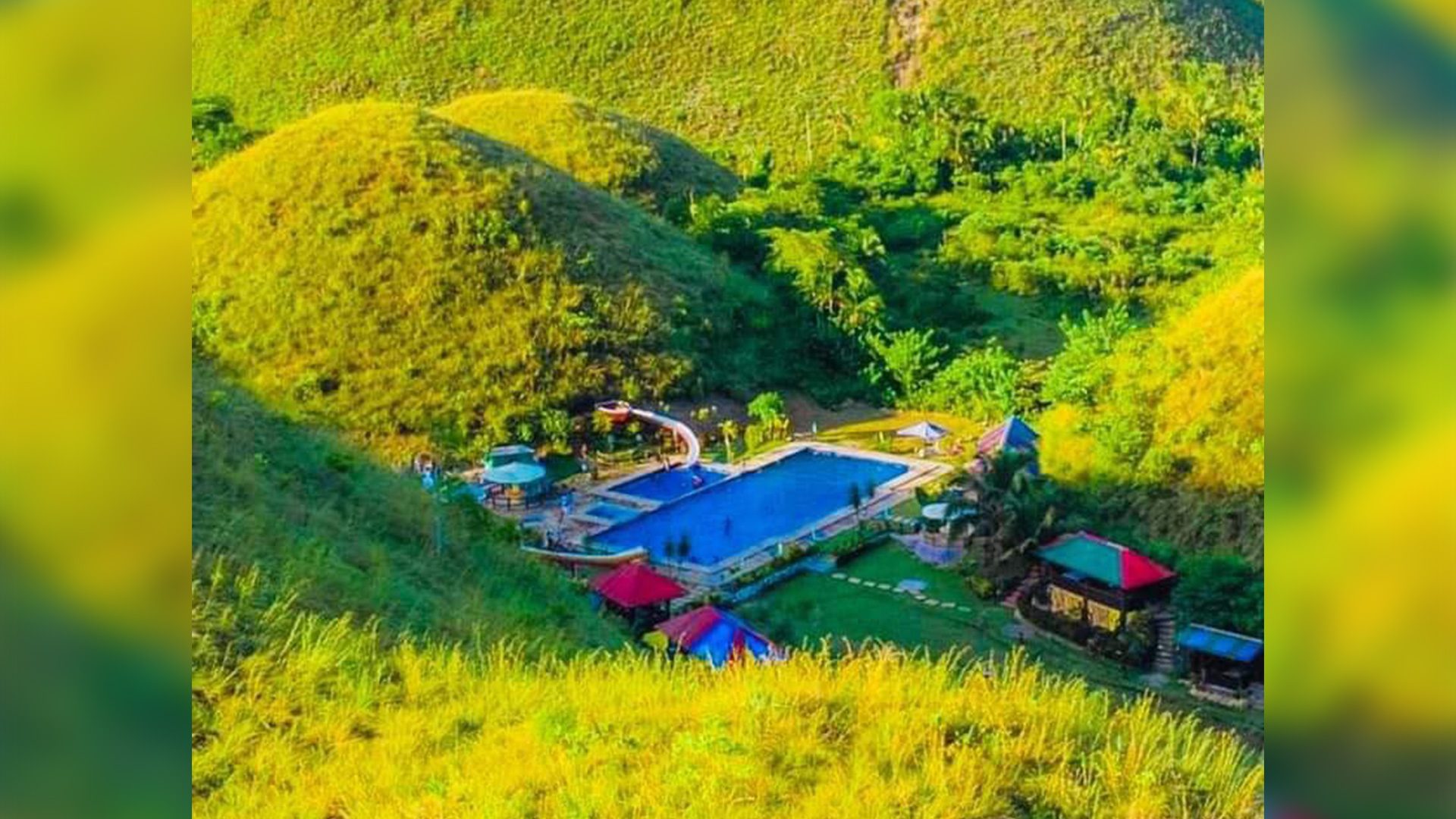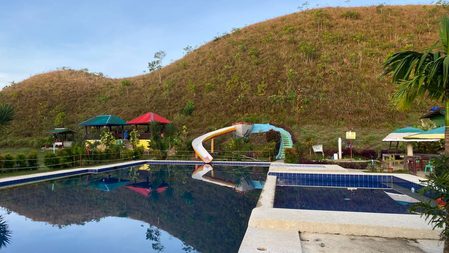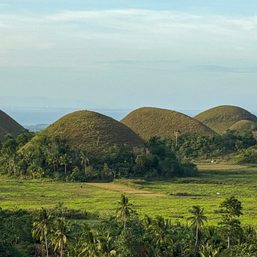SUMMARY
This is AI generated summarization, which may have errors. For context, always refer to the full article.

MANILA, Philippines – The Office of the Ombudsman launched its own probe into the Chocolate Hills controversy, Ombudsman Samuel Martires announced on Tuesday, March 19.

Martires, whose office is mandated to fight corruption and abuses within the government, said their investigators had formally started the probe on Monday.
“Isa ay pumunta ng regional executive director sa Cebu, ‘yong iba naman, tatlo ay pumunta ng Bohol, pumunta sa Sagbayan, at nagkakalap kami ng mga dokumento (One of the investigators went to the regional executive director in Cebu, three went to Sagbayan in Bohol, and we’re currently collecting documents),” Martires said in an interview with GMA’s DZBB.
The Ombudsman said they hope the list of names of Protected Area Management Board (PAMB) members, along those of who issued the business and building permits, will be given to them on Tuesday. PAMB approved the proposal for the development in the area, and issued a resolution that endorsed the construction.
Martires added that they are eyeing to finish their case build-up after the Lenten season so they can immediately start with their preliminary investigation.
Early this month, a vlogger named Renmark Nisnisan, also known as “Ren The Adventurer,” posted a travel video featuring Captain’s Peak resort, built in the middle of Chocolate Hills in Sagbayan, Bohol. The video caused a massive public outcry, particularly because the tourist spot is a protected area. (READ: What you need to know about Chocolate Hills)
But even before the viral video, Cebu-based The Freeman already reported about the supposed projects “ruining Chocolate Hills” as early as 2023.
On March 13, Senator Nancy Binay filed Philippine Senate Resolution No. 967 seeking a probe into the construction of all the structures built within the protected area. The Department of Environment and Natural Resources (DENR) issued a temporary closure order and a notice of violation against the resort for operating without an environmental compliance certificate.
Following the DENR’s orders, the town of Sagbayan also revoked the resort’s business permit on March 14.
Liability
Martires said on Tuesday that they have an idea who should be held liable for the mess, but noted that they have to gather evidence first.
“Siguro naman, ang paghahakot ng semento papunta sa kabundukan ay hindi lingid sa mga dinadaanang barangay. So imposible ‘to. Dahil sabi nga, may kasabihan nga sa probinsya, sa aming maliit na bayan sa Samar, ”Pag ikaw ay may ginawa sa dulo ng bayan, agad aalingasaw ‘yan sa kabilang dulo ng bayan,'” he added.
(I believe, the villages in the area are not oblivious to the transfer of cement to the mountains for the construction. So this is impossible, because we have a proverb in the province, in our small town in Samar: “If you did something wrong at the other end of the town, the other end will immediately know about it.”)
They are seeing possible administrative and criminal liability, and if cases will be filed, the owner of the resort can also be held liable, Martires said. He also reiterated that Chocolate Hills is a protected area, which means there are limitations in place to protect it.
“So kahit ito’y may mga pribadong may-ari, sa mga lupain na ito, ay limitado ang ‘yong paggamit ng iyong istruktura kasi kahit naman dito sa atin sa siyudad, hindi naman natin puwedeng, ‘yong tinatawag nga na, karapatan ng kapitbahay mo, ‘yong right to view. ‘yong mga gano’n ba. Hindi mo puwedeng harangan,” Martires explained. “So gano’n din sa mga protected area.“
(So even if these lands are privately owned, the establishment of structures is limited because even here in the city, your neighbors have rights – they have a right to view. You cannot block their residential view. Same principles apply to protected areas.)
The Ombudsman also revealed that after their current investigation into the Chocolate Hills controversy, they will form a team to investigate another tourist gem – Mount Apo – located in the Davao Region.
What is a protected area?
Chocolate Hills is a protected area under Republic Act (RA) No. 7586 or National Integrated Protected Areas System Act of 1992, and through Proclamation No. 1037, s. 1997, signed by the late president Fidel V. Ramos, according to the Department of the Interior and Local Government.
Under the law, a protected area “refers to identified portions of land and water set aside by reason of their unique physical and biological significance, managed to enhance biological diversity and protected against destructive human exploitation.” Section 20 of the law generally prohibits the following acts within protected areas:
- Hunting, destroying, disturbing, or mere possession of plants, animals, or products from the area withot necessary permits
- Dumping any waste products that may harm the plants, animals, or inhabitants in the area
- Use of any motorized equipment without necessary permit
- Mutilating, defacing, or destroying of “objects of natural beauty, or objects of interest to cultural communities”
- Damaging and leaving roads and trails damaged
- Squatting, mineral locating, “or otherwise occupying any land”
- Constructing or maintaining any structure, fence, or enclosures, or conducting any business without necessary permits
- “Leaving in exposed or unsanitary conditions refuse or debris, or depositing in ground or in bodies of water”
- Altering, removing, destroying, or defacing boundary marks
As for the penalty, the law states that anyone found guilty will be fined not less than P5,000, but not more than P500,000, “exclusive of the value of the thing damaged or imprisonment for not less than one (1) year but not more than six (6) years, or both, as determined by the court.”
The law also set other specific sanctions if the damaged area will require rehabilitation, and if the offender is an association or corporation, among others. – Rappler.com
1 comment
How does this make you feel?









I appreciate the action of the Office of the Ombudsman through Ombudsman Samuel Martires. The office was reactive regarding the Chocolate Hills issue but is now proactive regarding Mount Apo. How about forming another team for Mount Apo to conduct these two investigations simultaneously? If the Mount Apo investigation is delayed, it might give time for possible culprits to tamper with evidence, etc. Lastly, does Ombudsman Martires remember the issue of the SALNs? This is just a friendly reminder if he ever cares about the SALNs issue.